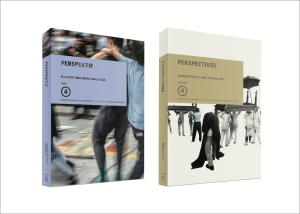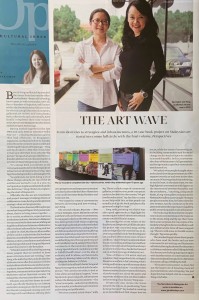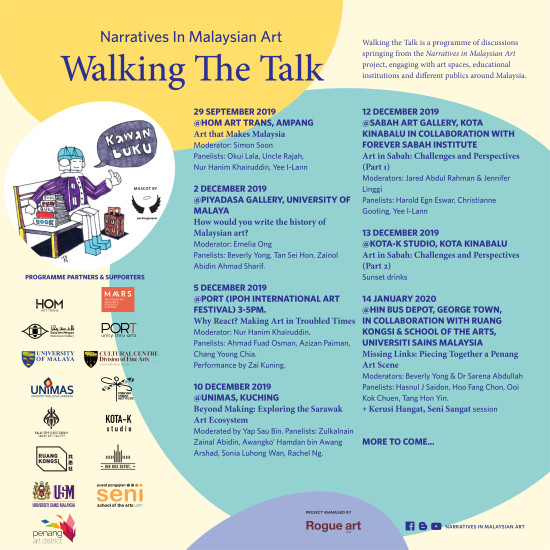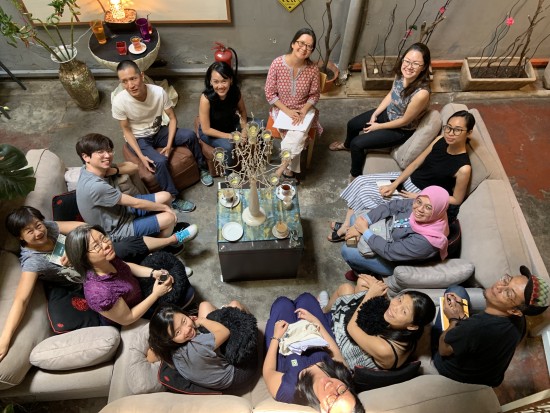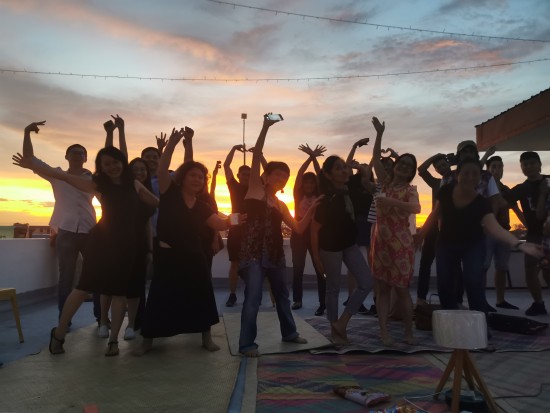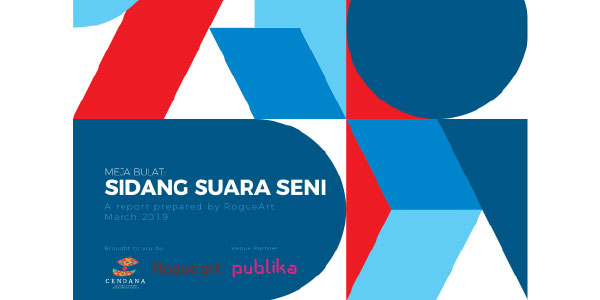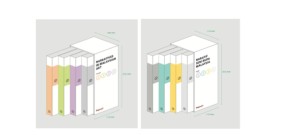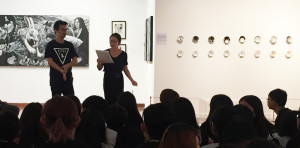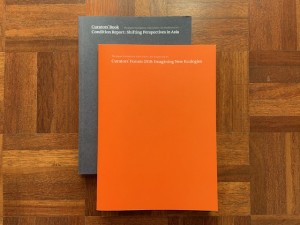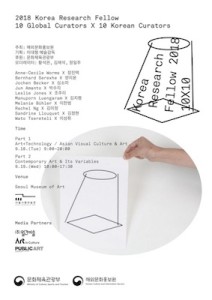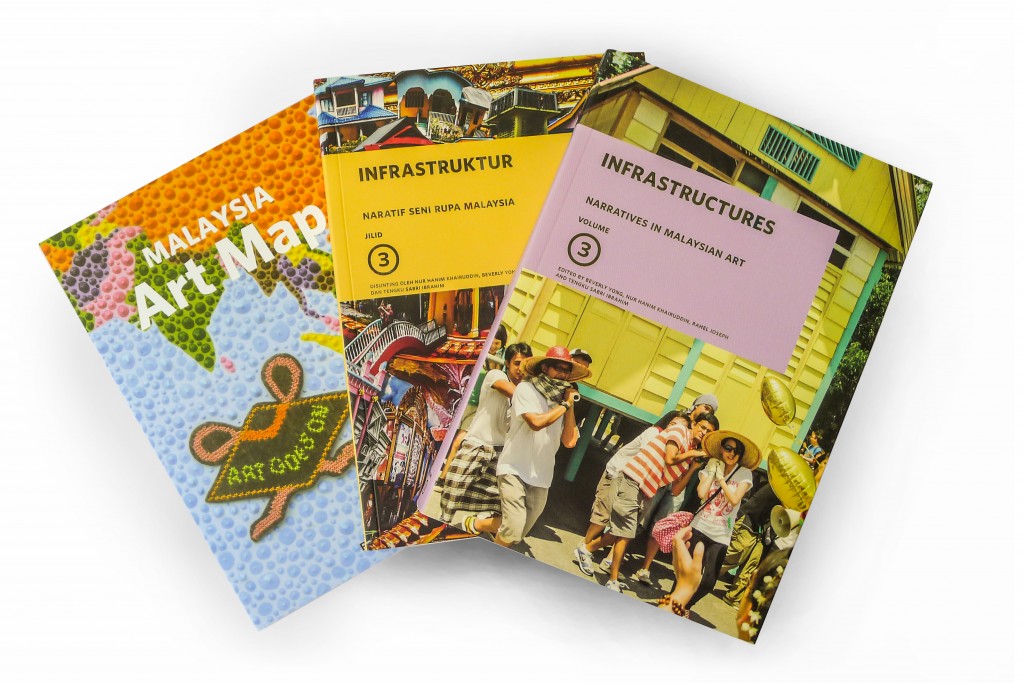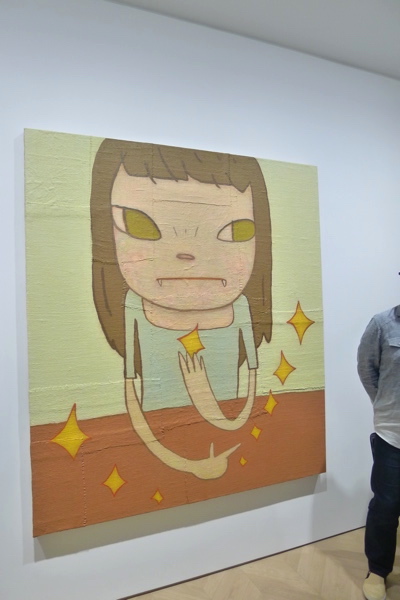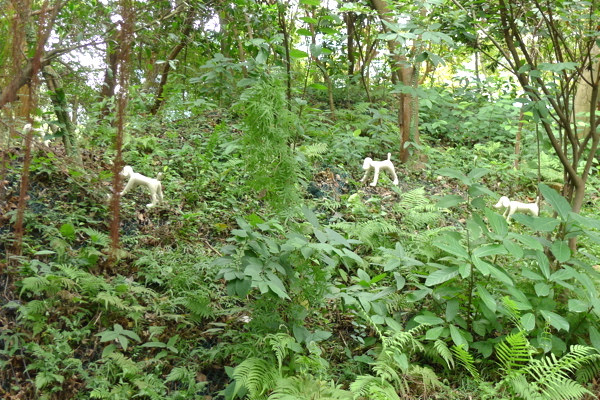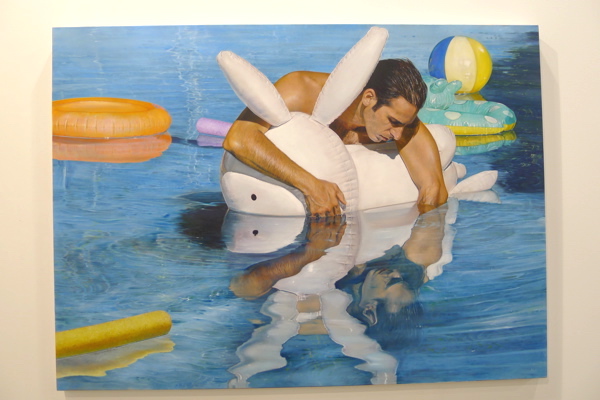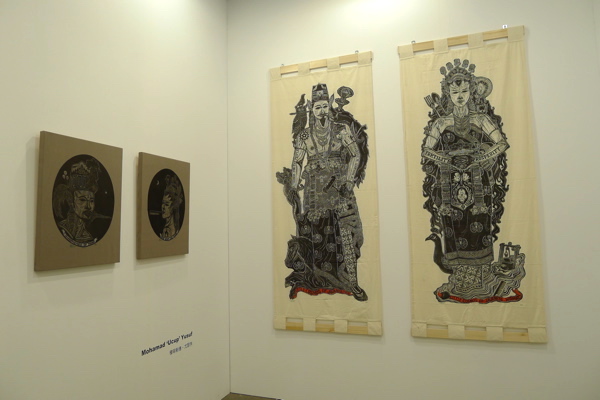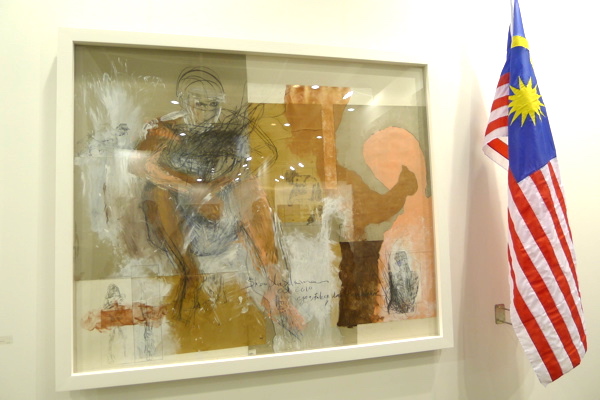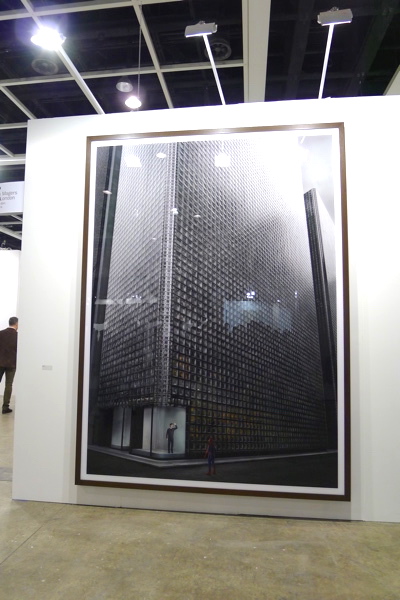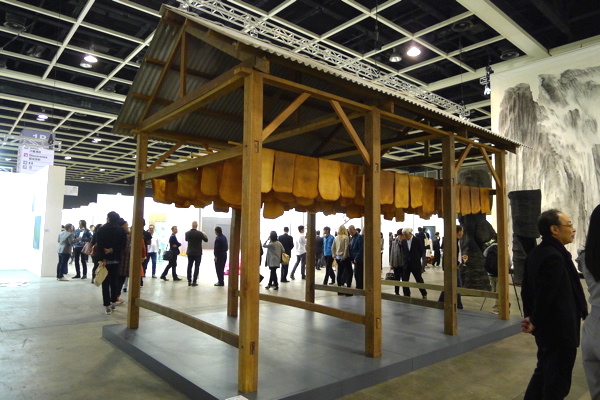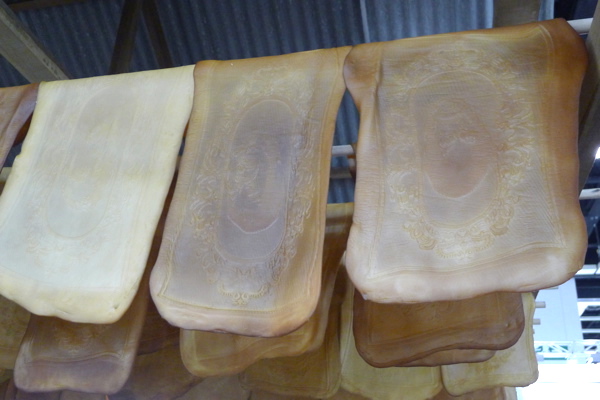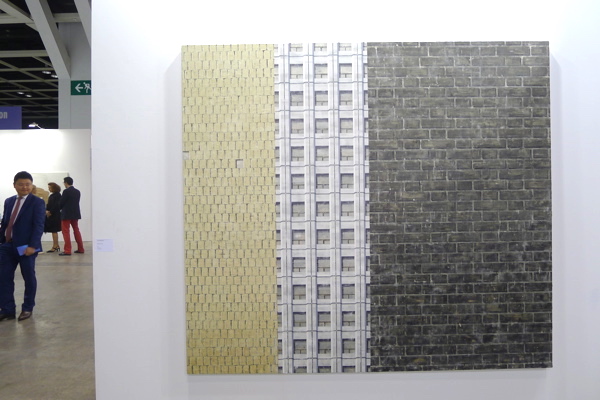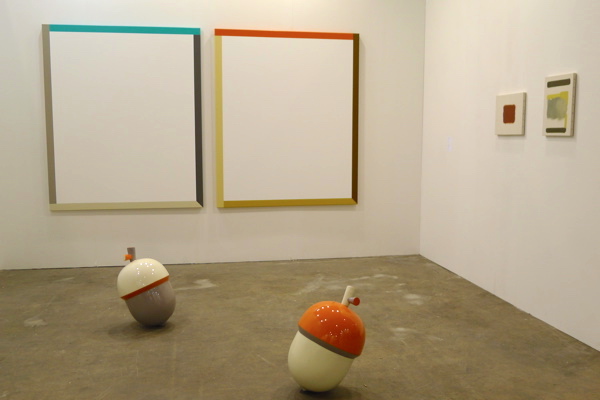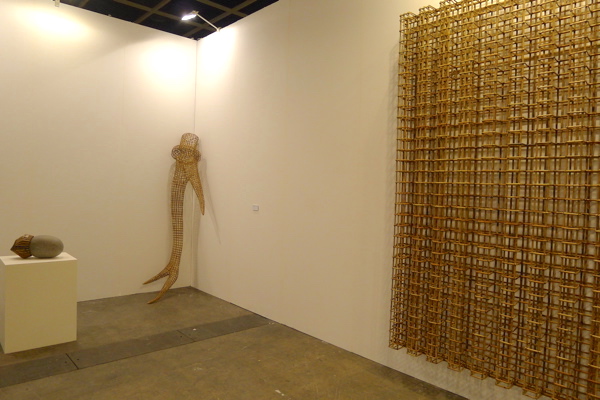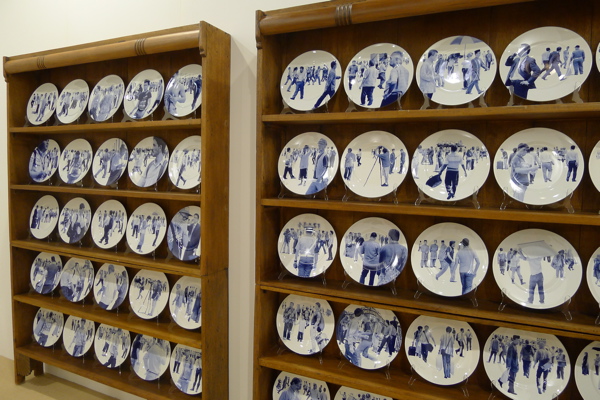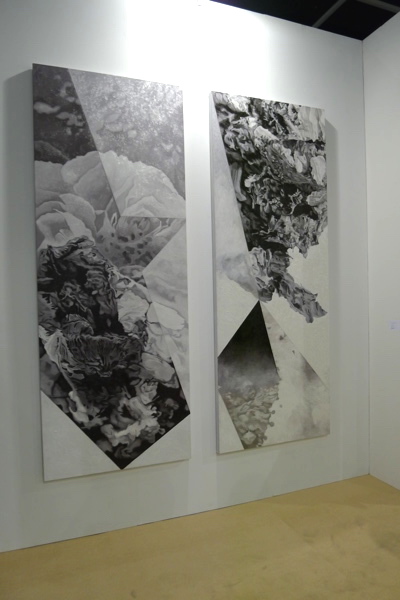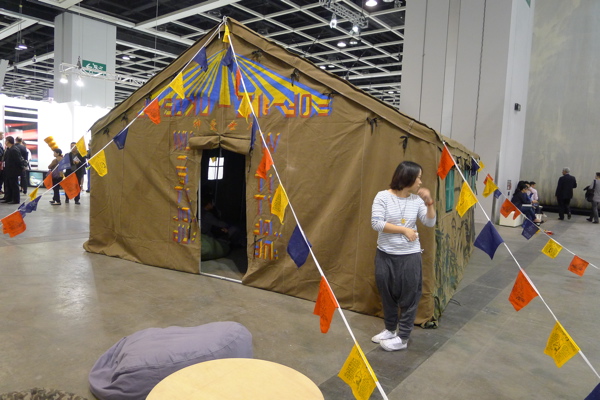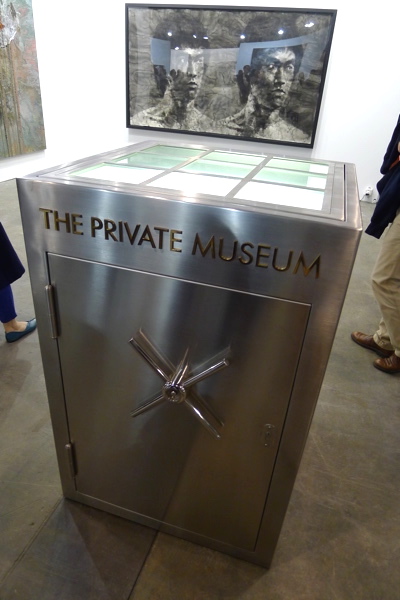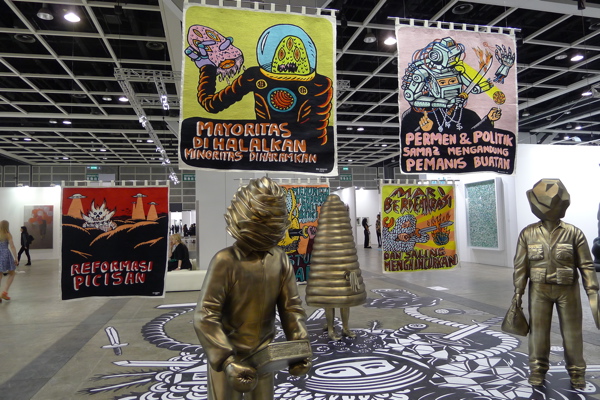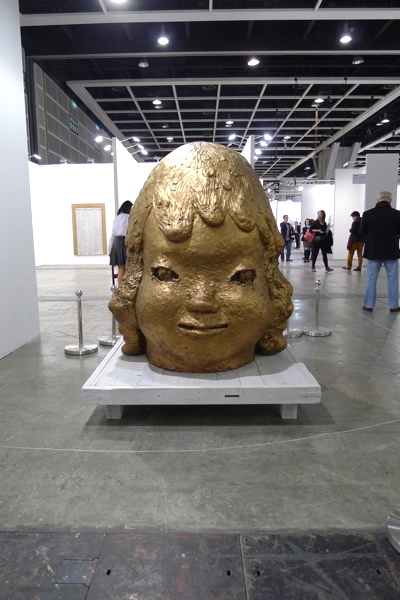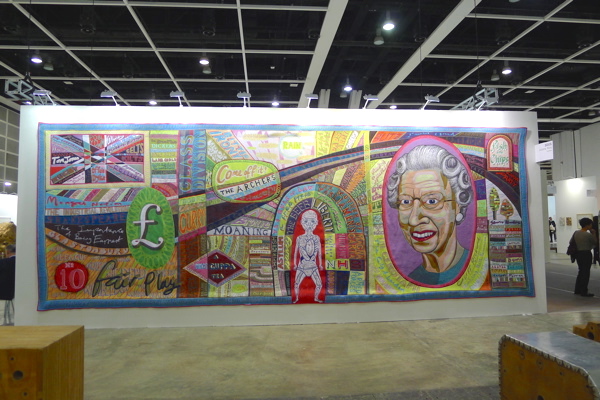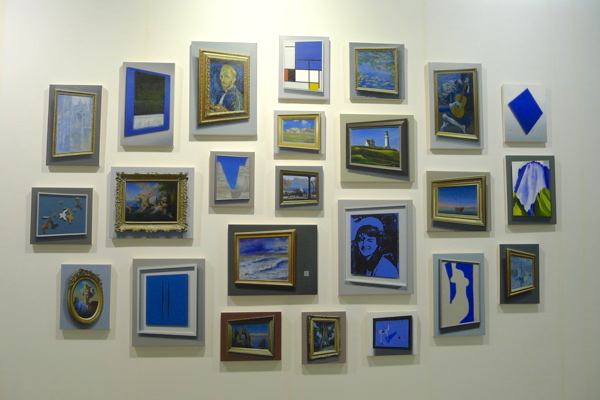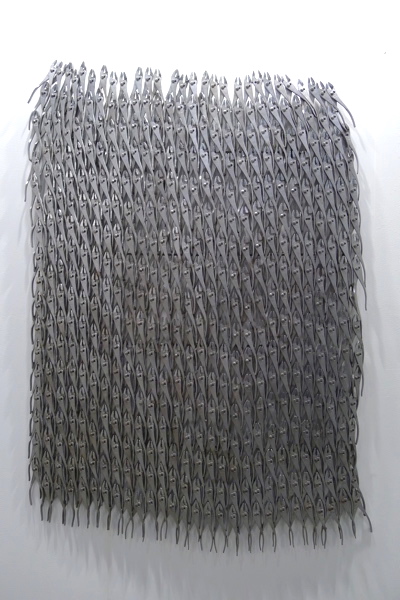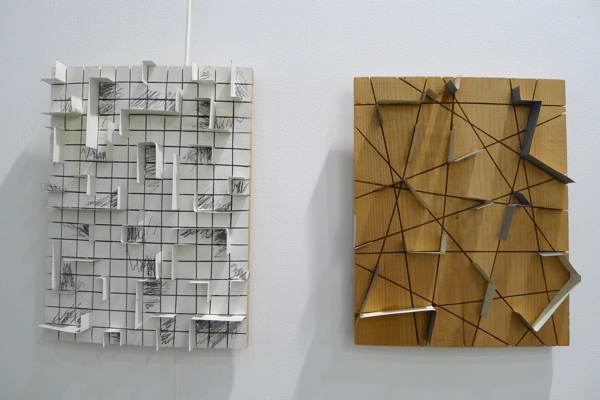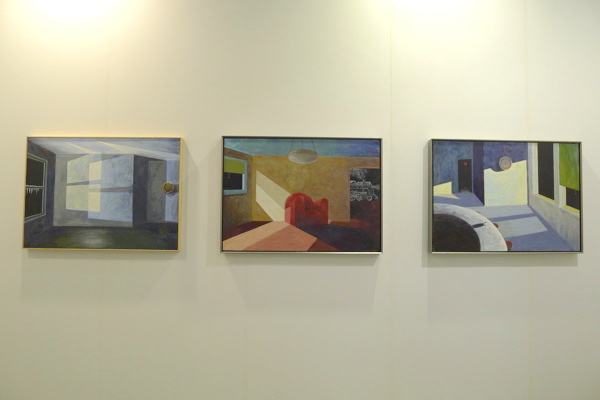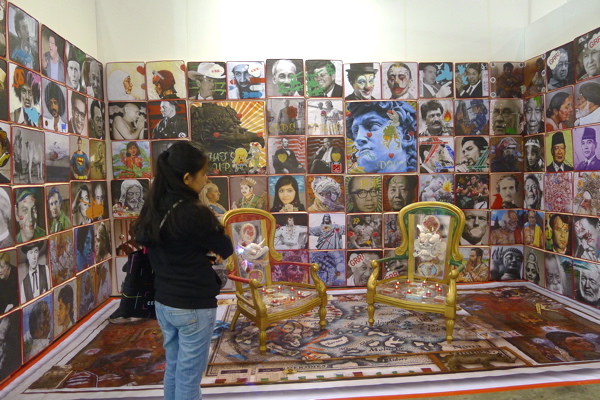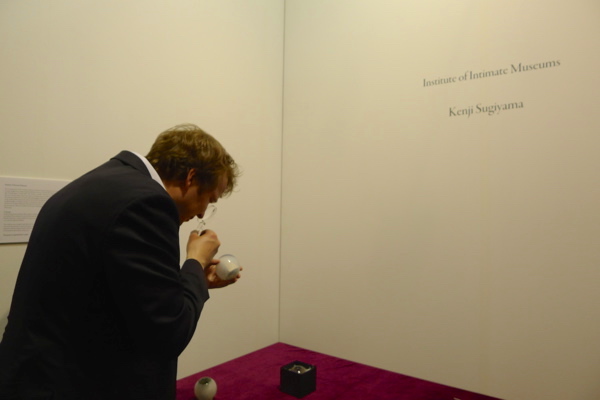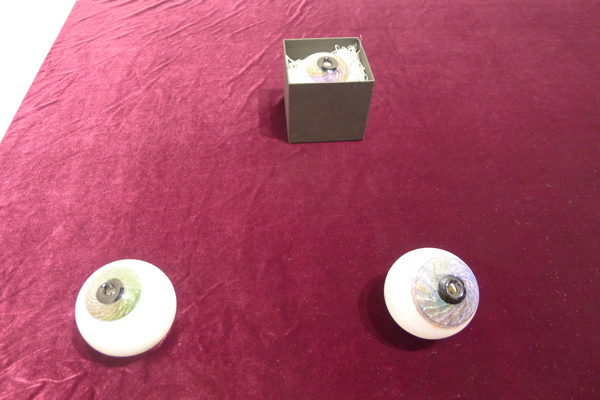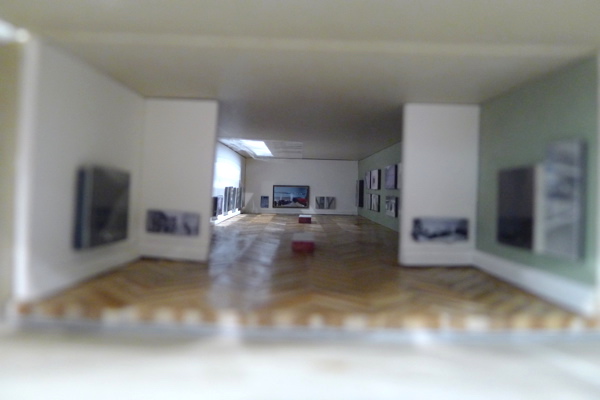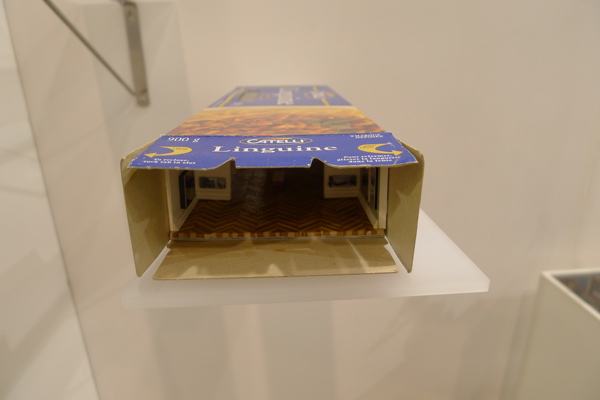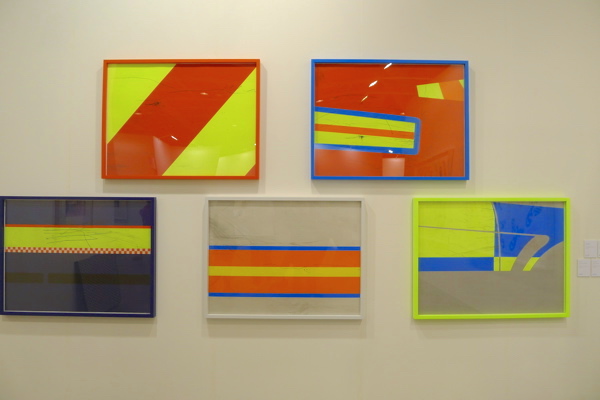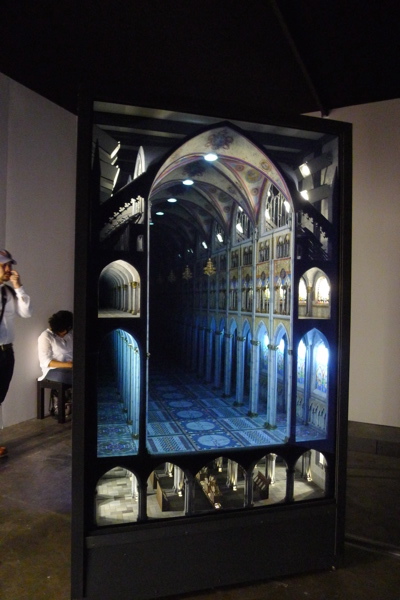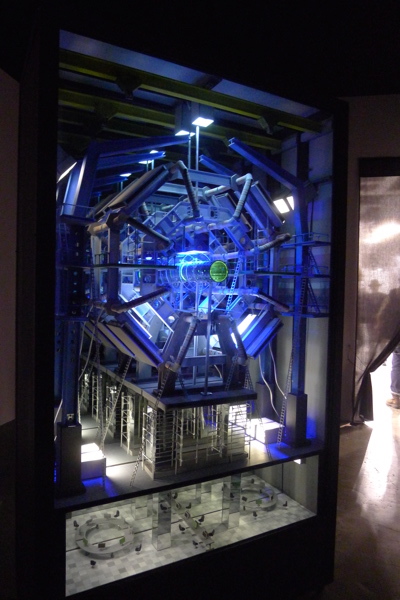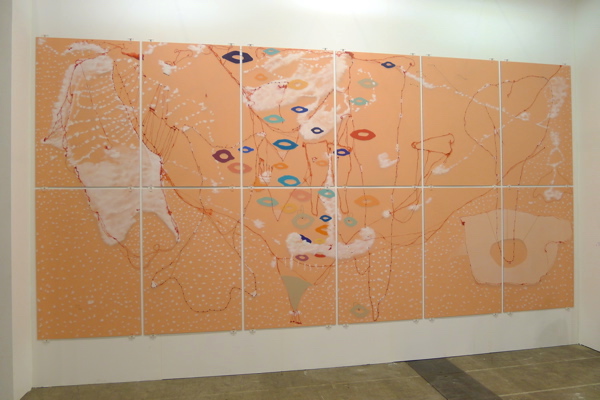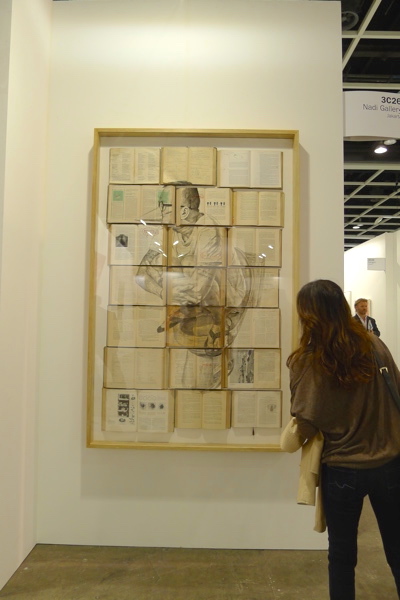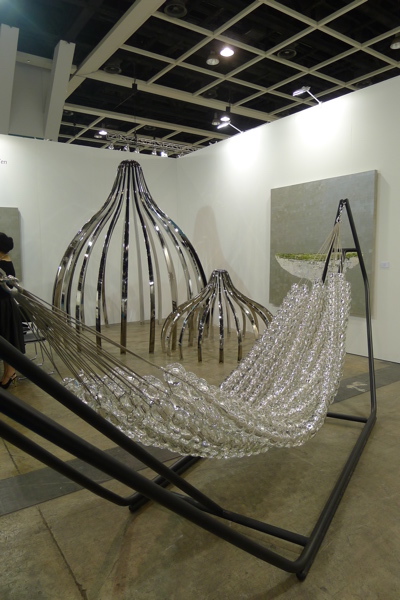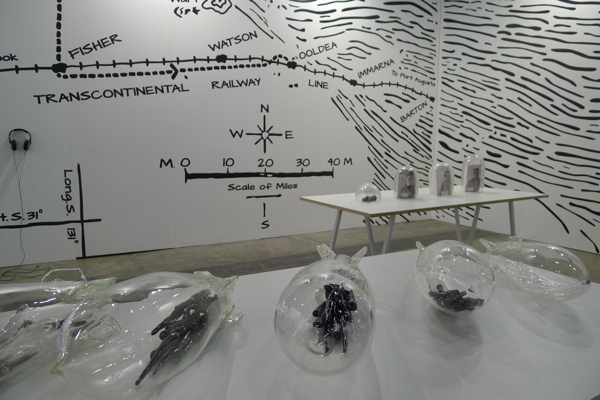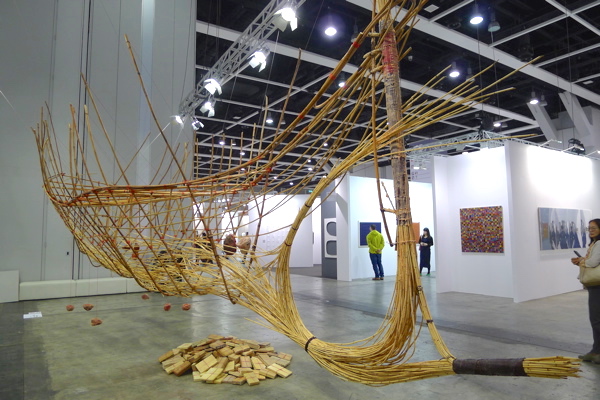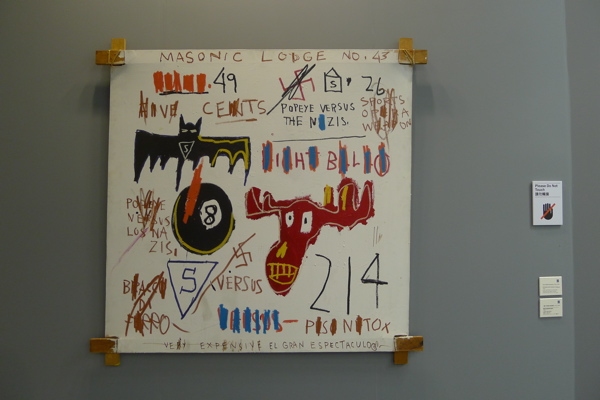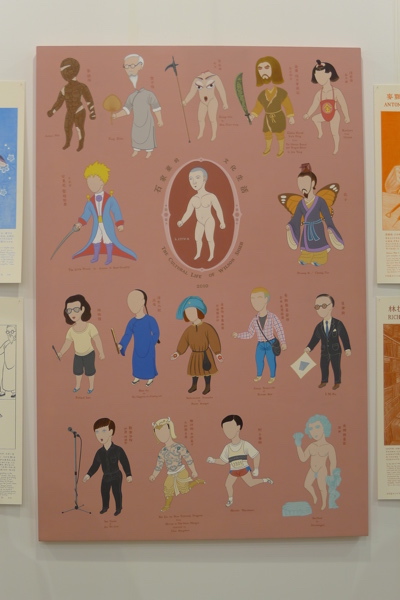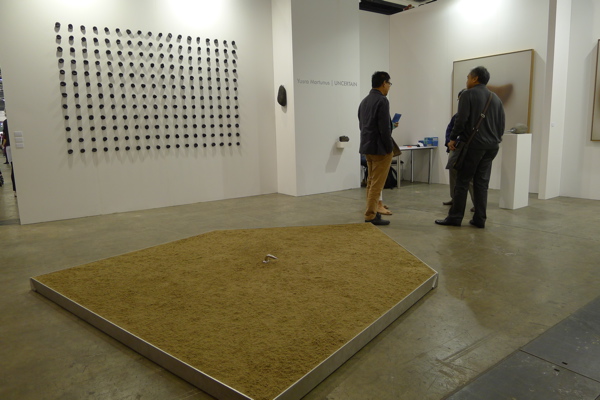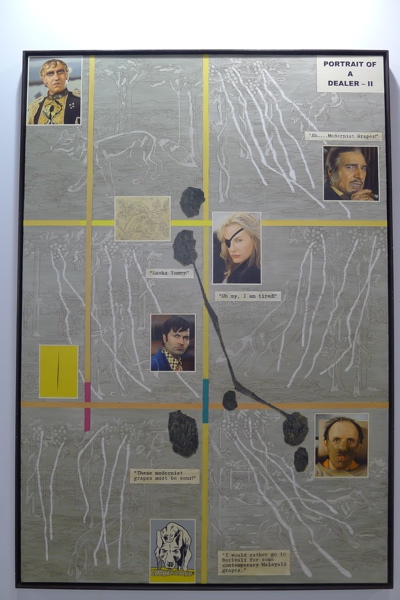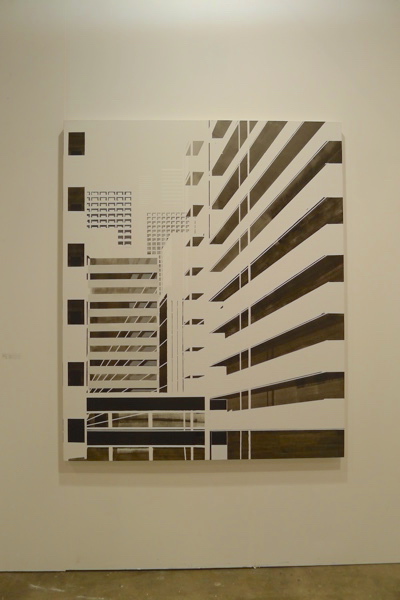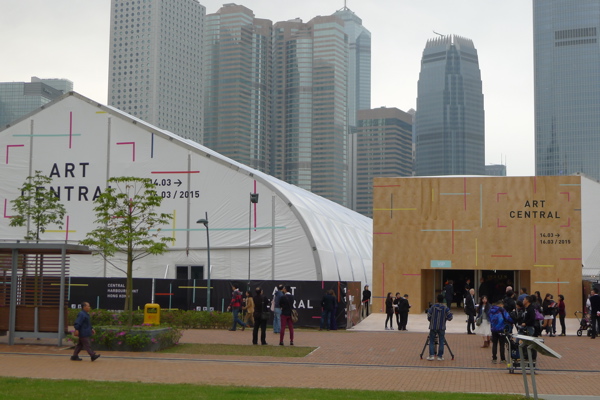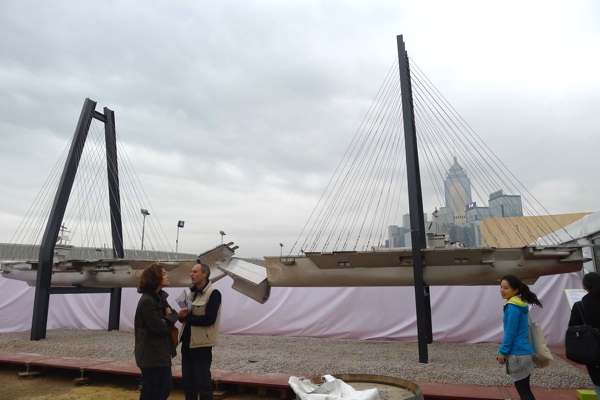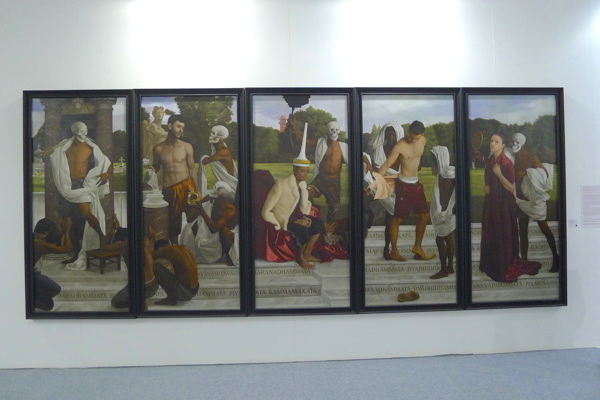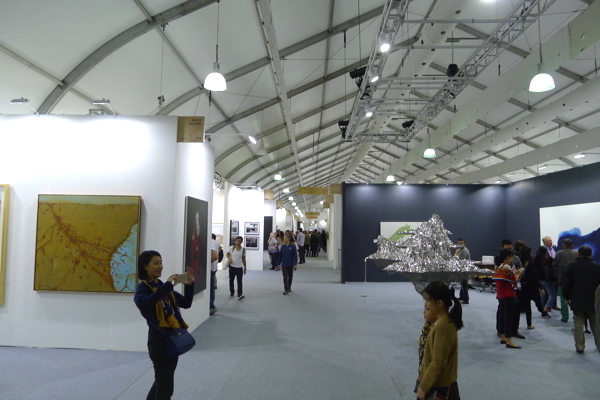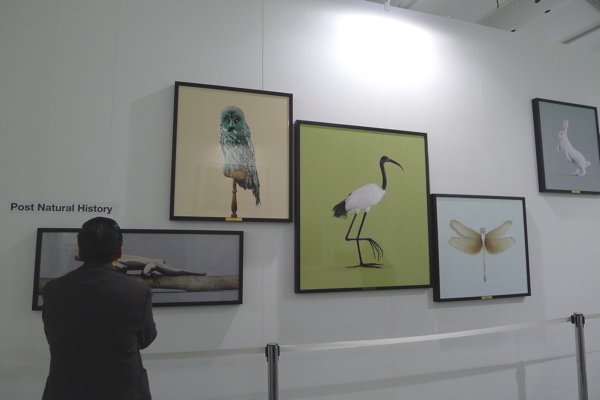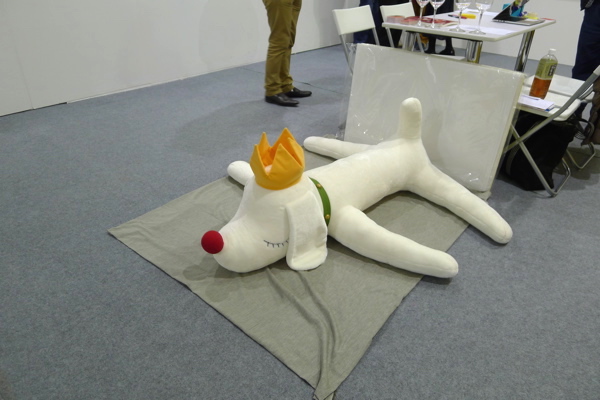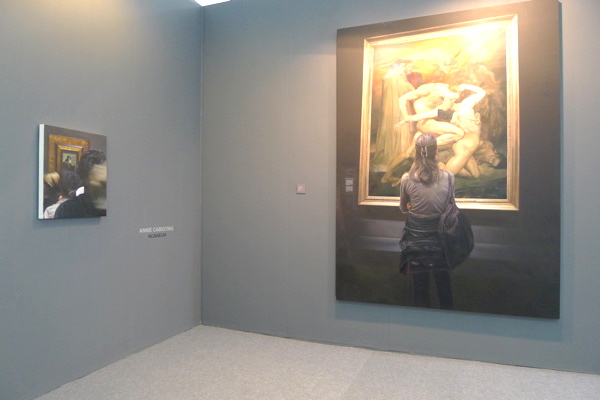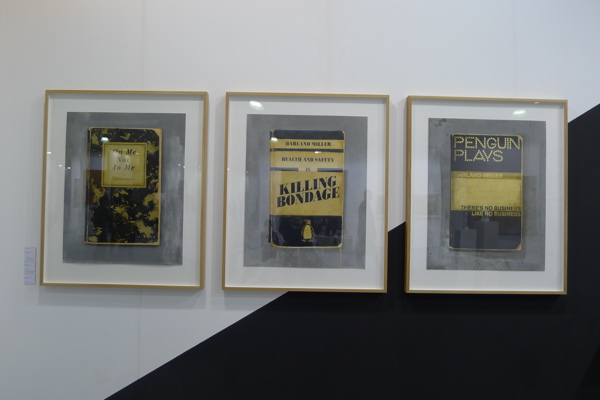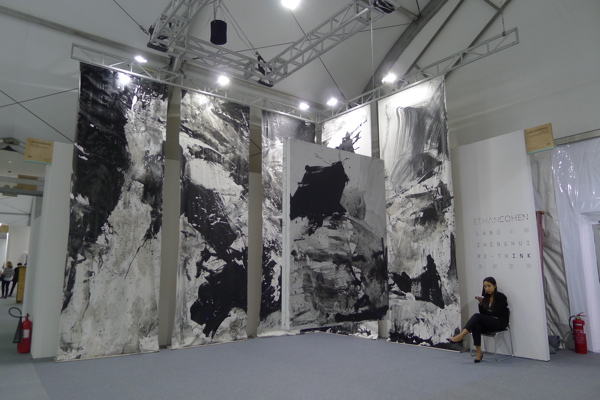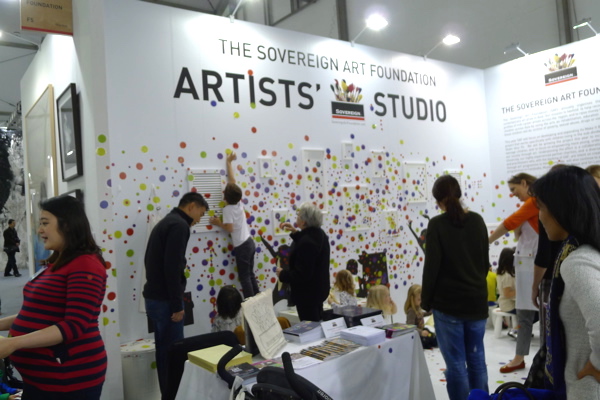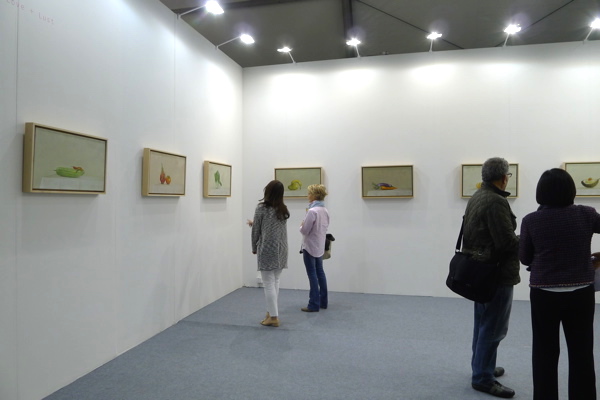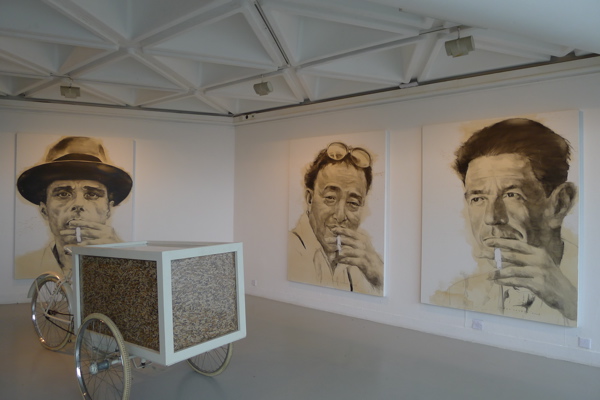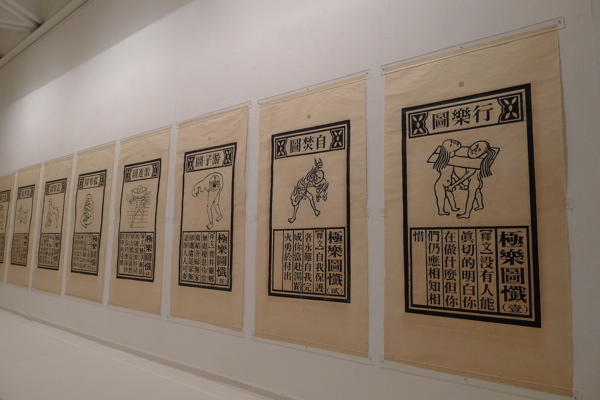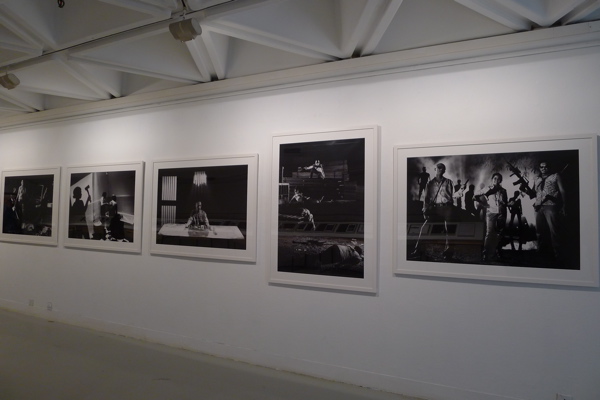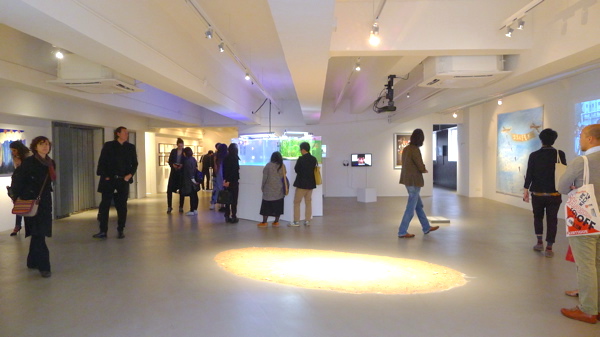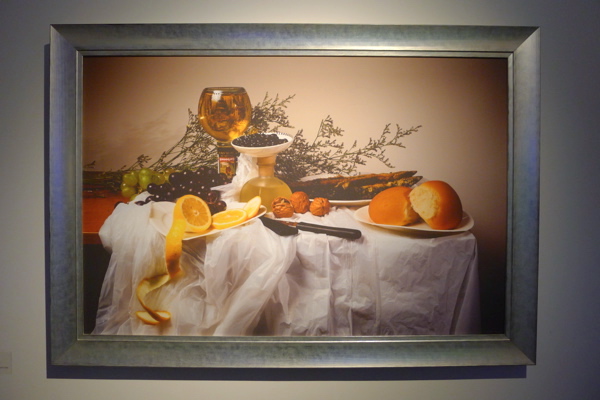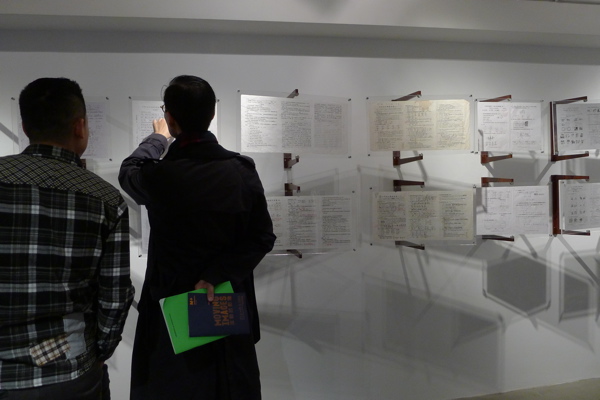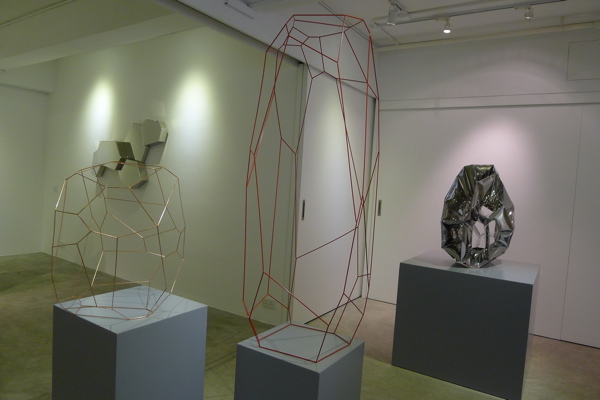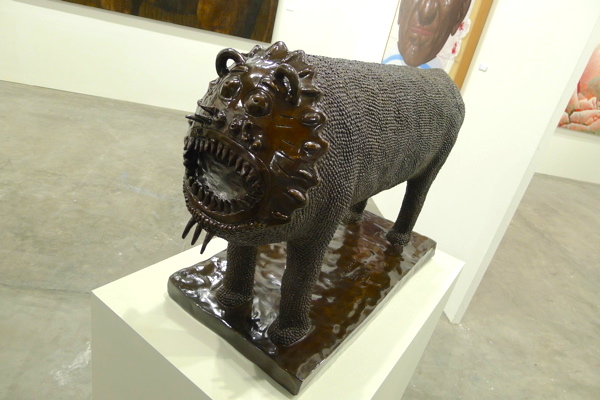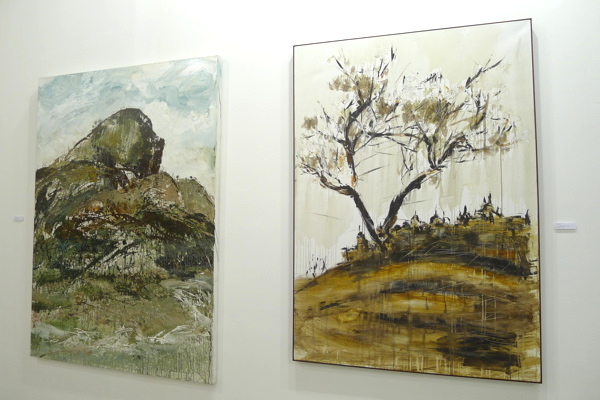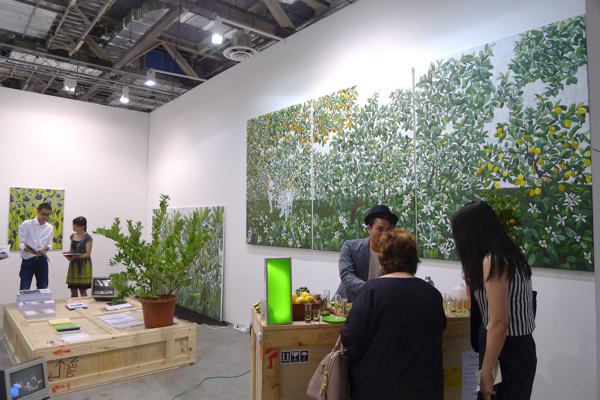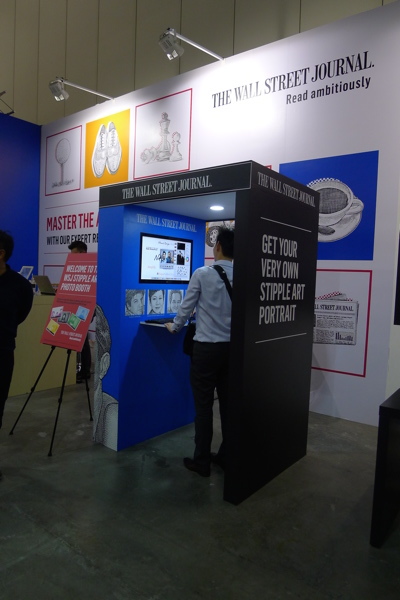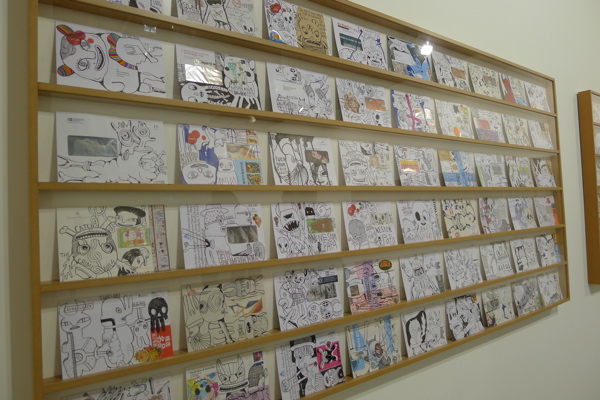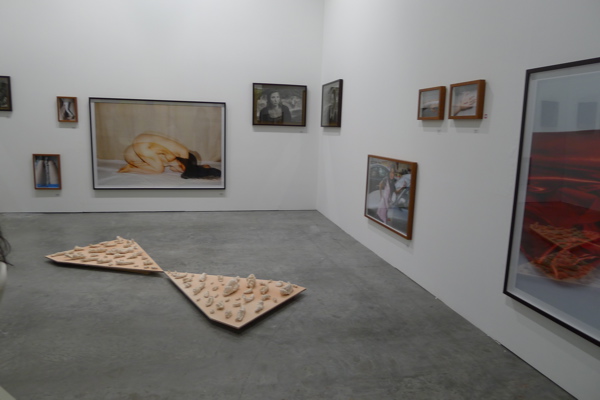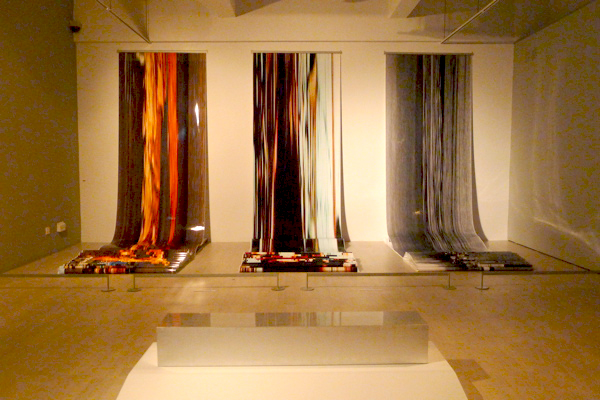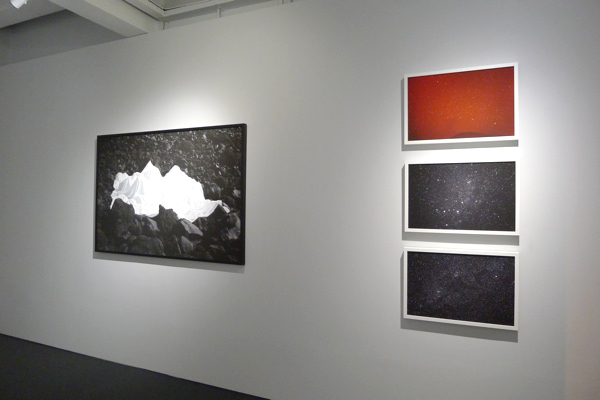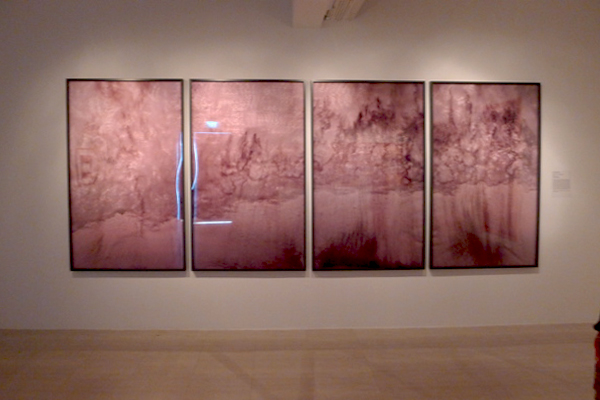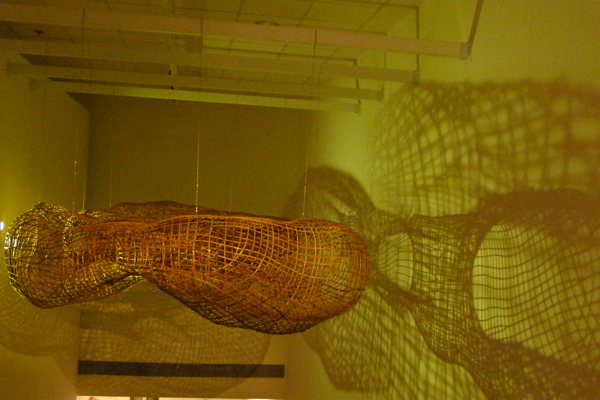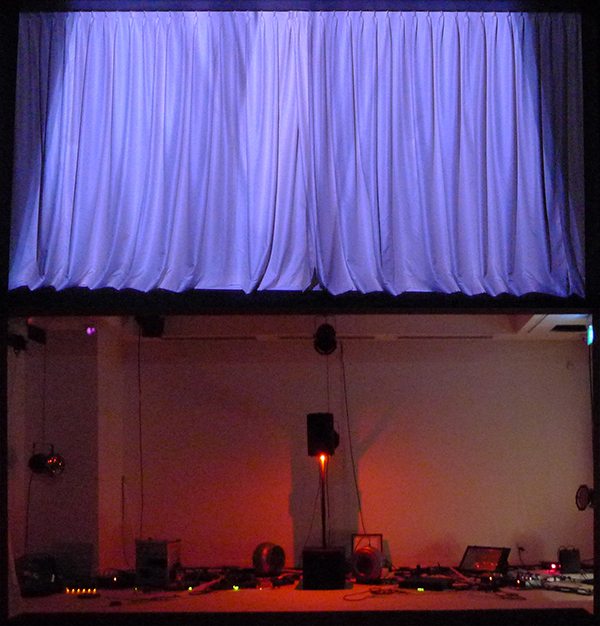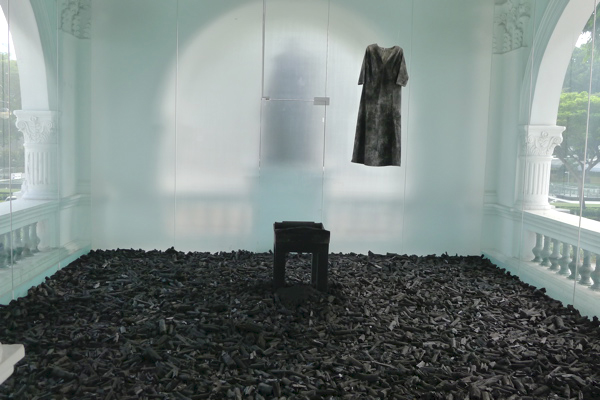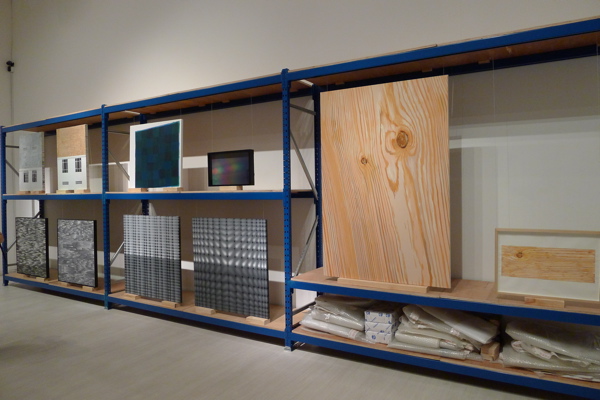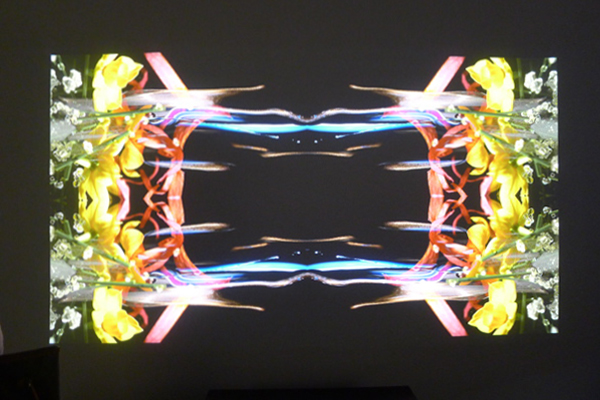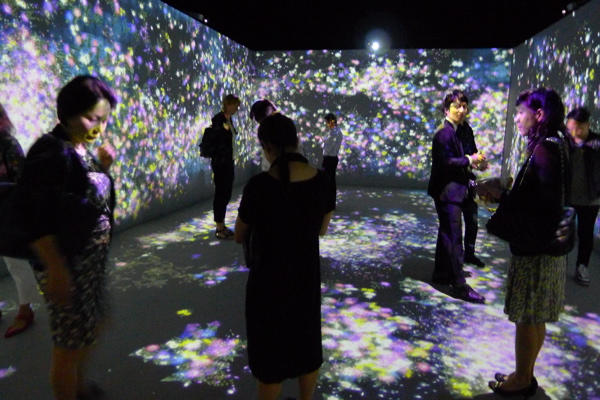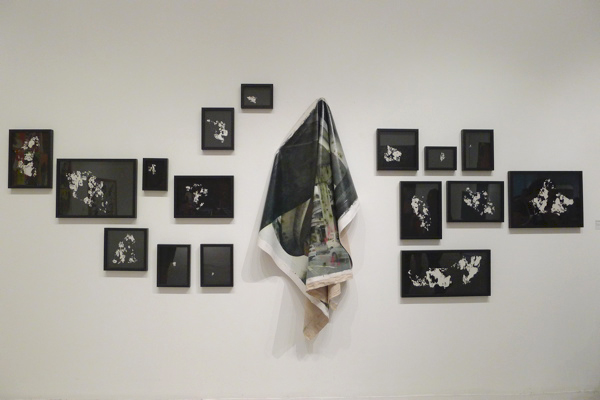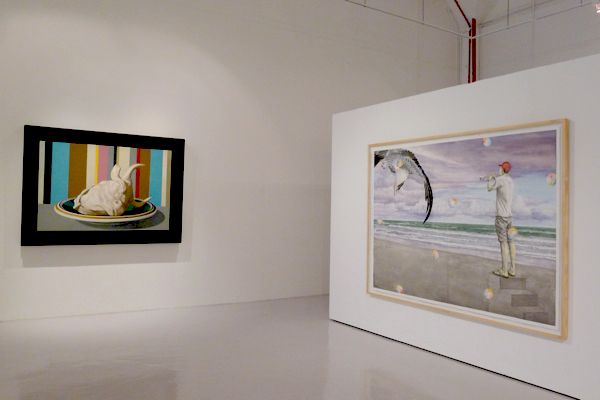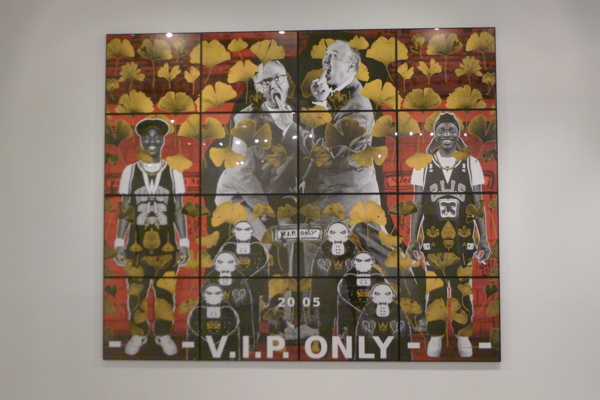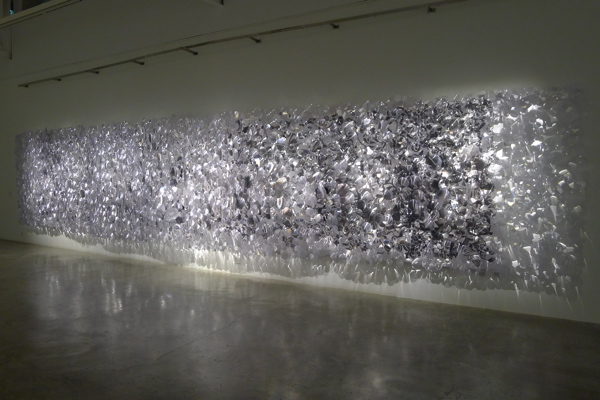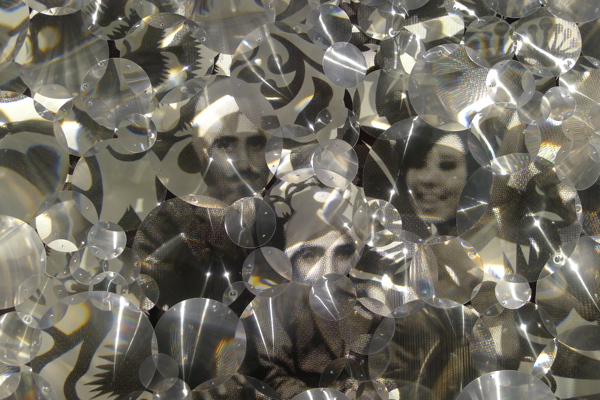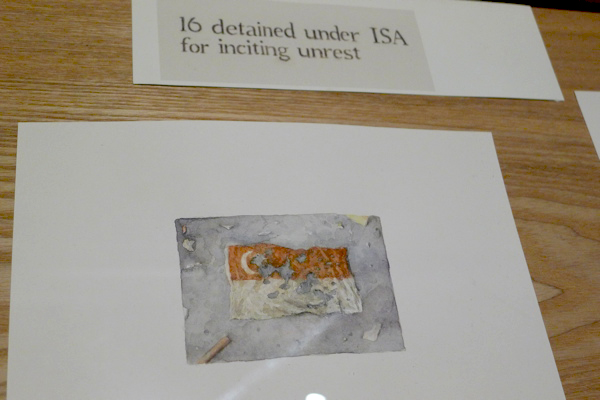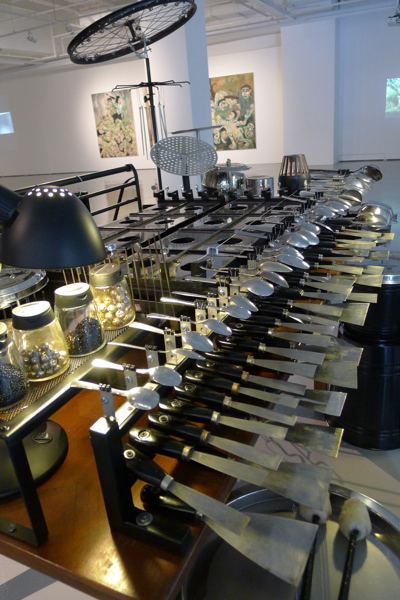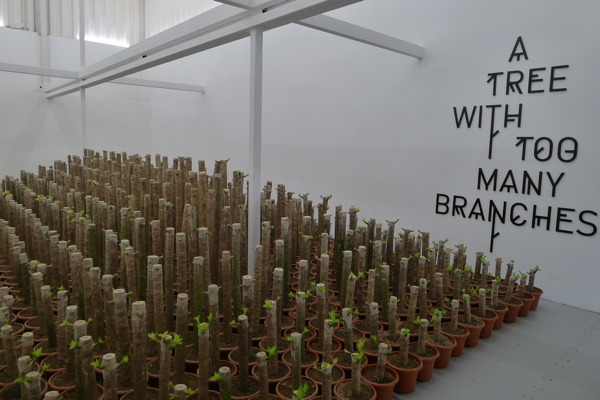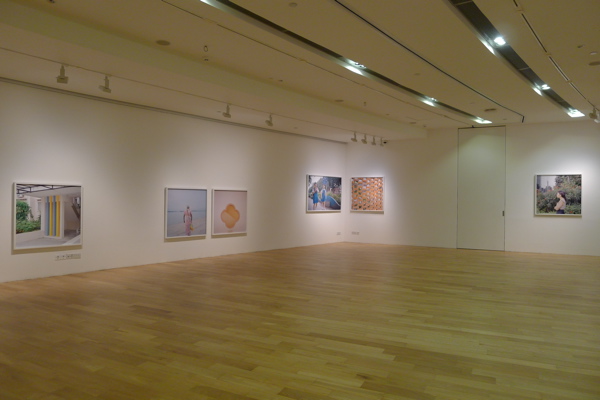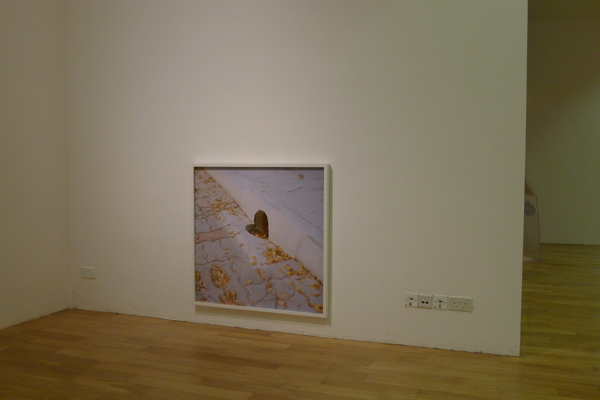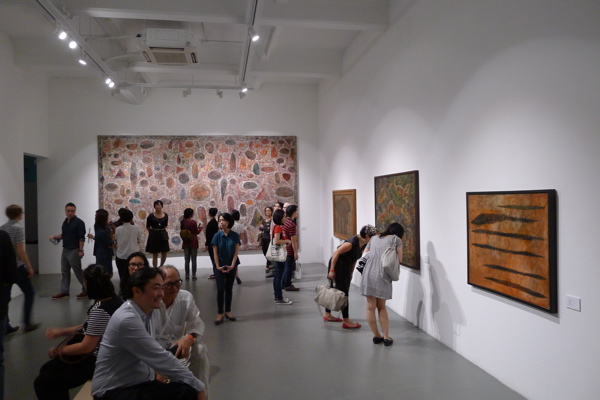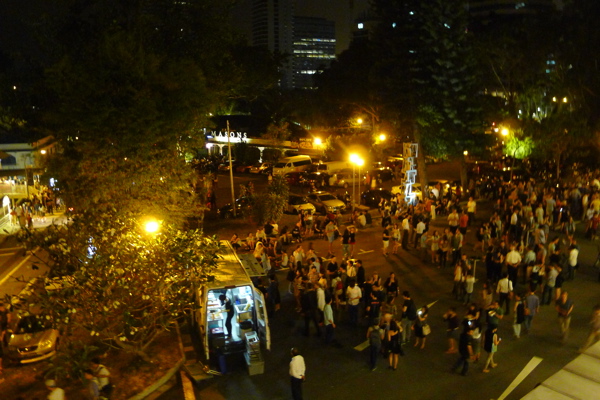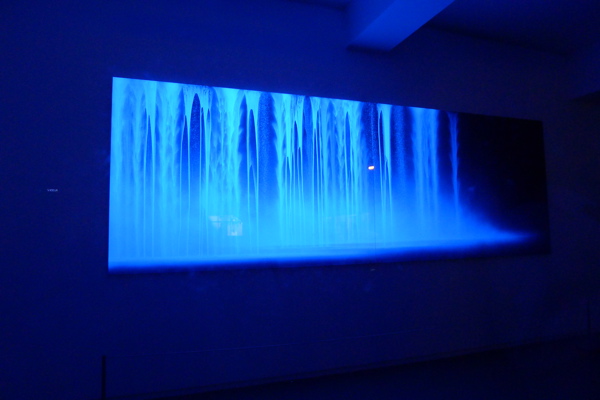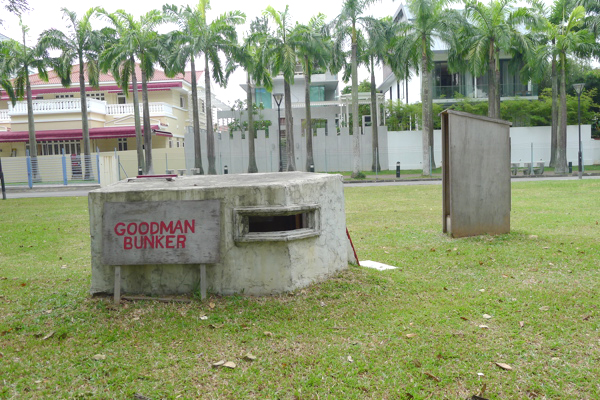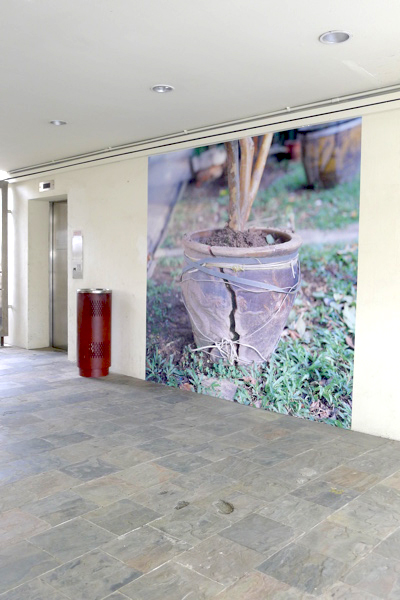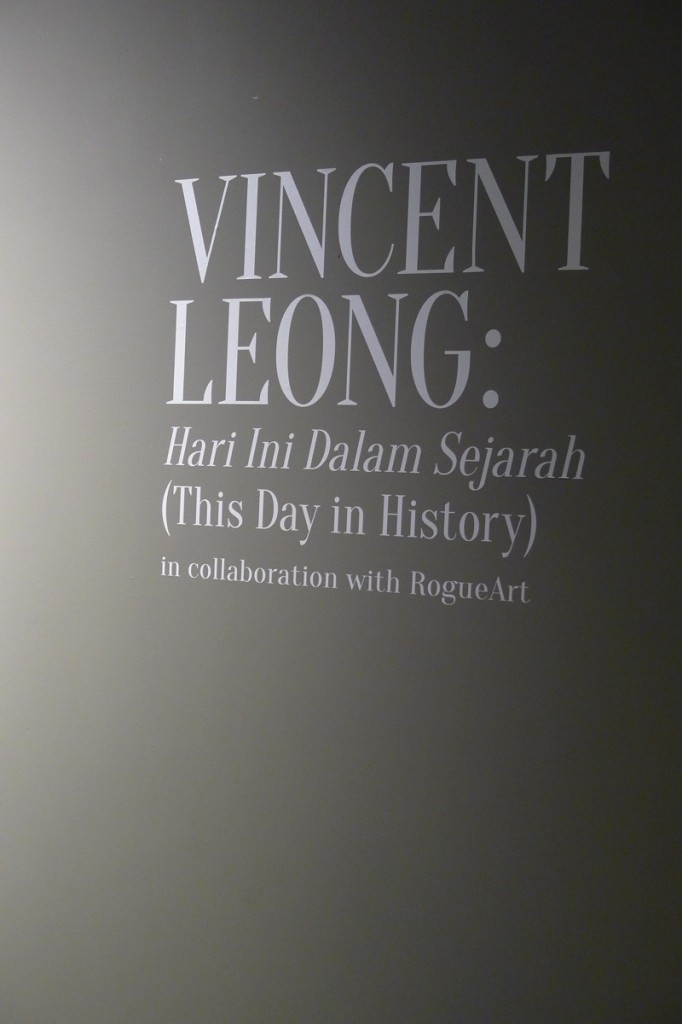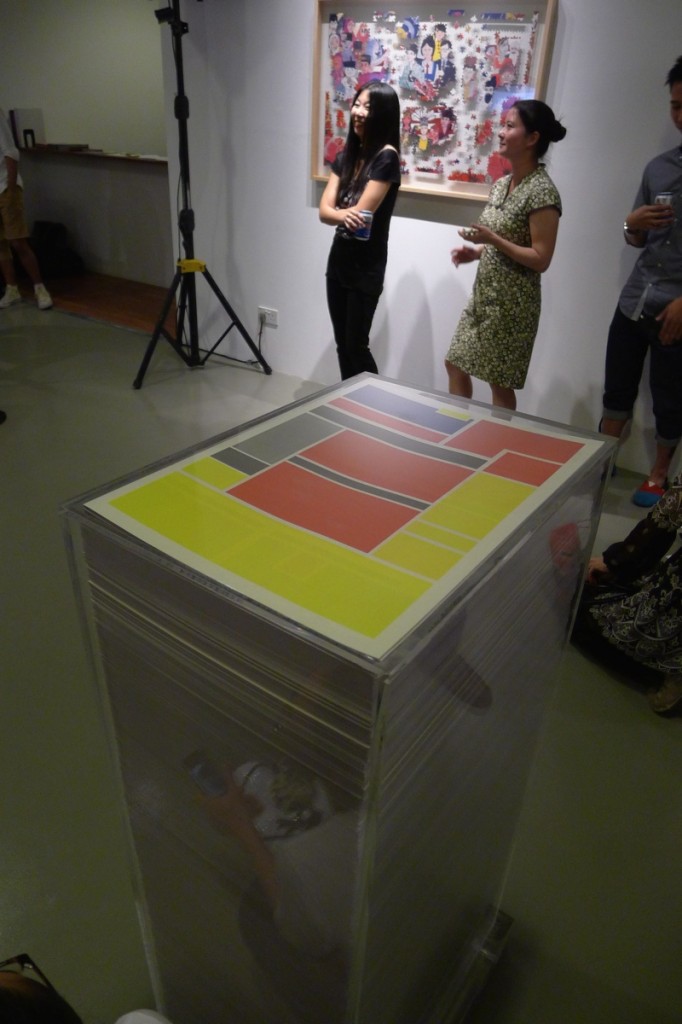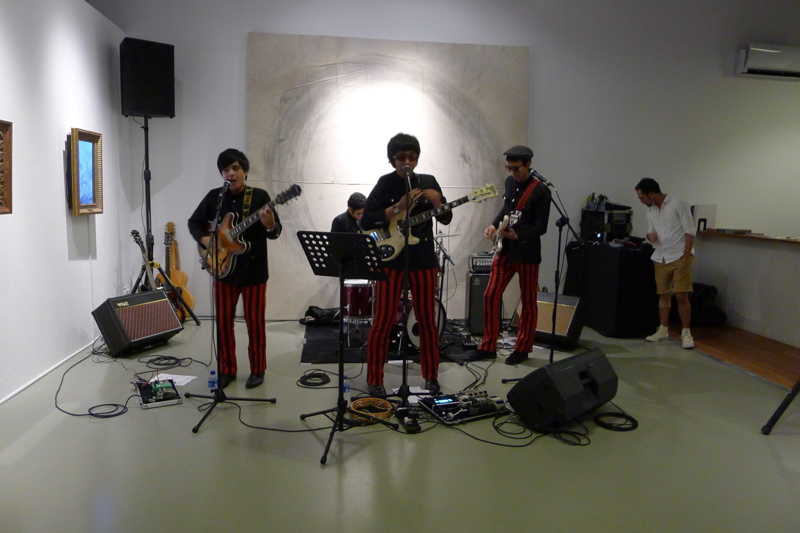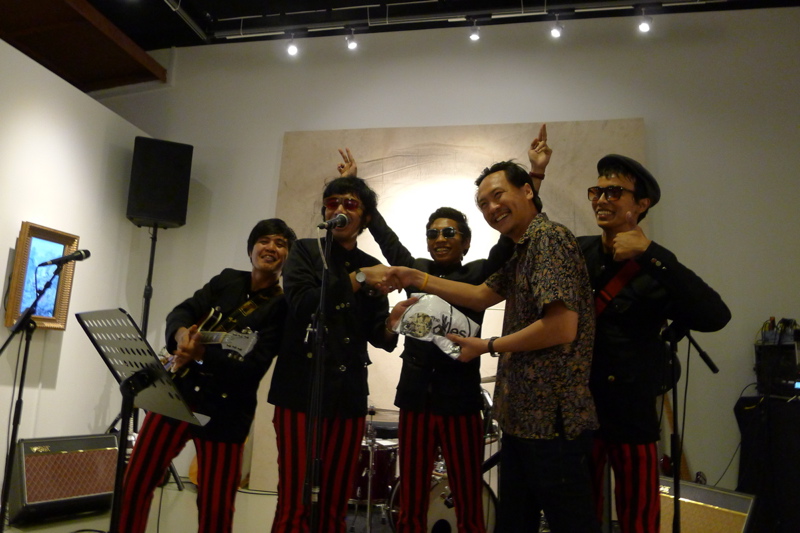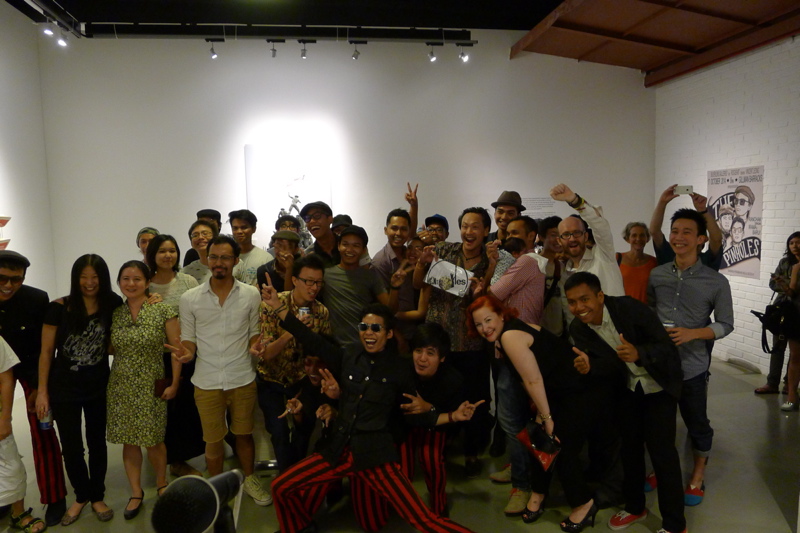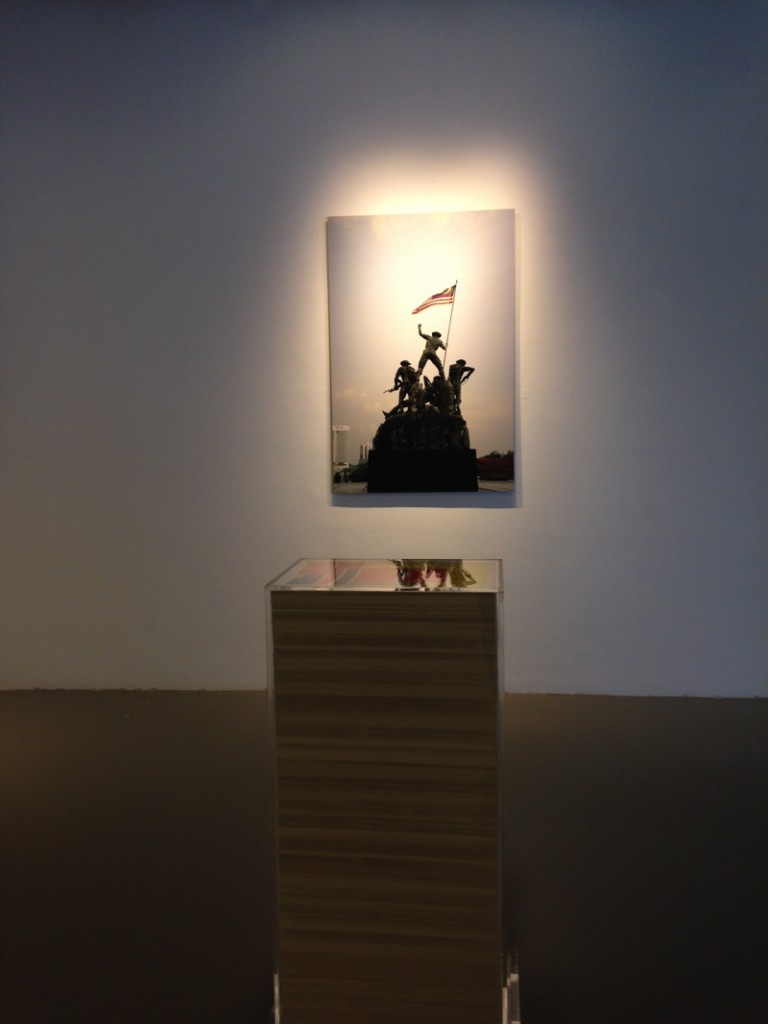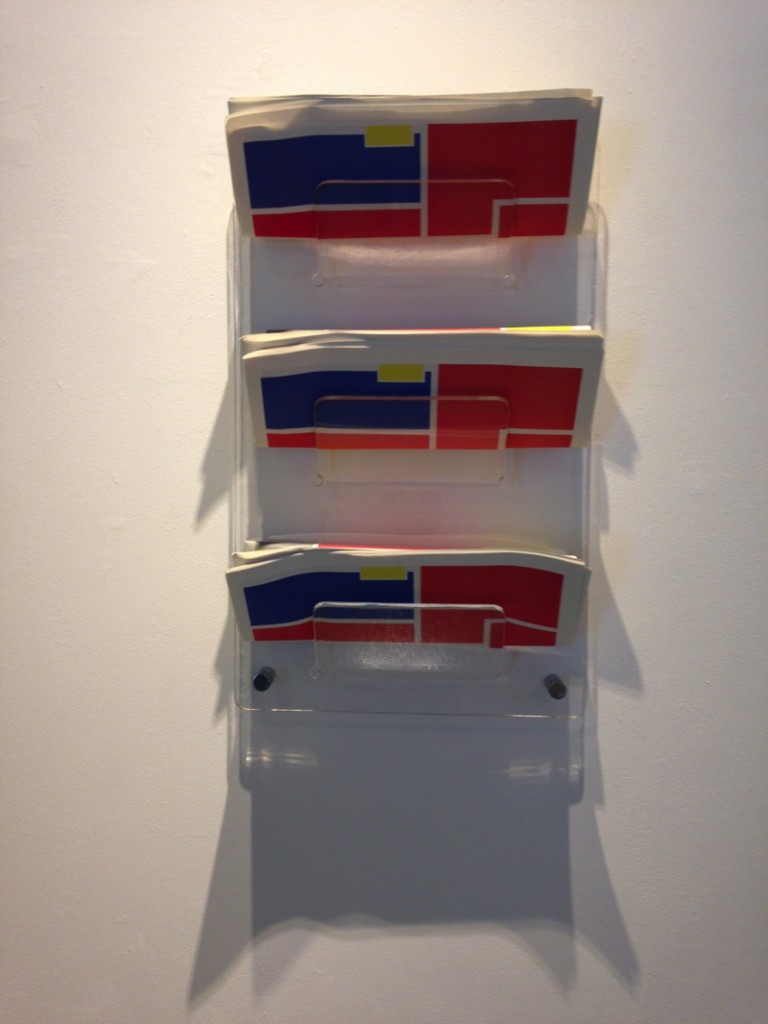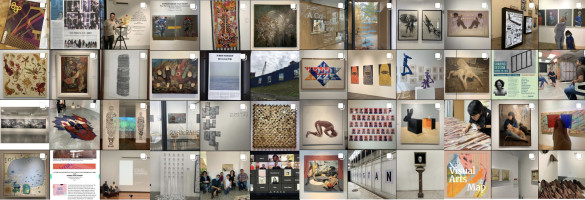
We’ve come to the end of a long 2020 motivated by the energy and persistence of others. We’re grateful to be working, and to see artists and spaces still making and showing. We thank everyone we’ve worked with on projects realised and unrealised for their support and inspiration. It’s a year where it feels especially important to make a record of what’s gone on – so rather than our usual newsletter, we list below:
What RogueArt got up to:
No Boundaries: A Collector’s Process came out (we were editors/publication manager for this third book published in the Helu-Trans Collectors series)
Missing Links: Piecing Together a Penang Art Scene at Hin Bus Depot, Georgetown: the last discussion in the Narratives in Malaysian Art project’s Walking the Talk series before we hit MCO, in collaboration with Ruang Kongsi and School of the Arts, Universiti Sains Malaysia
Joining forces with Art Kepoh and other groups and individuals for Art Goes On? a series of discussions and forums addressing sector issues during the pandemic
Joining forces with Tuk Kura of ARTO Movement to kick-start Jaringan Kurator in an effort to get the growing number of curators based here to link up and share knowledge
Putting together a Visual Arts Ecosystem Map, with researcher Krystie Ng and designer Kenta Chai for CENDANA.
An Art Exhibition-Making Toolkit in partnership with Kota-K Studio, strategic partner CENDANA, made possible by friends and supporters investing in Sabah art – it’s been very inspiring working with Kota-K, co-facilitator Jared Abdul Rahman, guest mentor Lee Weng Choy and a super group of participants; as well as hearing from exhibition-makers in Sabah and the region in our kick-off sharing session. Looking forward to the exhibition project outcomes next year!
Search and Discover: The Joy of Collecting Selections from the Yeap Lam Yang Collection (Beverly was co-curator and publication co-editor with Aaron Teo at The Private Museum, Singapore, almost entirely by remote)
Plotting what to do next with and how to build on from Narratives in Malaysian Art, with the help of Mesita Jee and the collaboration of NMA co-editors Nur Hanim Khairuddin, Rahel Joseph, Yap Sau Bin and Simon Soon.
Aside from reviews for Art Asia Pacific, Beverly also did an interview Yee I-Lann: Rolling Out the Tikar, which became their cover feature for Issue 117; and guest wrote The Edge Options’ Cultural Index column for Women’s Day.
But mostly, we’ve been helping Dr Steve Wong organise and catalogue his collection of contemporary Malaysian and Southeast Asian art. This epic journey, led by Rachel, continues with a great team – artists Hannah Nazamil, Nur Atiqah Khairul Anuar and curator Falil Johari, and logistics and installation hero Ben Oh and assistants.
Shelved to 2021: two ambitious exhibitions and publications, for Yee I-Lann & collaborators (Kota Kinabalu & Kuala Lumpur; and Jalaini Abu Hassan (Kuala Lumpur). Watch this space.
Things we noted, shows we caught in Malaysia 2020* (*find pics on our Instagram, rogueartsea):
Last flights out: Rachel flew out to Taipei Dangdai, also catching the Asian Art Biennale Asian Art Biennale: The Strangers from beyond the Mountain and the Sea which included Malaysian artists Ise and Yee I-Lann; Beverly helped moderate a panel with Lim Wei-Ling, Richard Koh and Yee I-Lann (!), Southeast Asia Art Watch: Malaysia at SEA Focus in Singapore.
Gloomy prescients: In January, artworks featuring a naked man, some pigs and images of Mahathir, Azmin and Anwar were removed from Ahmad Fuad Osman’s At the End of the Day Even Art Is Not Important at Balai Seni Negara, sparking community petitions, boycott threats from collectors, a statement from Anwar Ibrahim himself and a reinstating of the works. Meanwhile, Ilham Gallery’s The Body Politic and the Body which ran until MCO featured Yap Sau Bin’s conceptual take on legacies of power, The Grand Phantom Narrates, Redza Piyadasa’s May 13, 1969 coffin alongside Usman Awang’s poem referring to the death of democracy and Hasanul Isyraf Idris’ macabre drawings including figures in hazmat suits dragging away and corraling diseased bodies. All not long before “the Sheraton move”, etc, etc, etc and the targeting of foreign workers and undocumented migrants during the MCO.
Openings, closures, movements, anniversaries: Brave new spaces in the Klang Valley included Rissim Contemporary (Bangsar), Mutual Aid Projects (Wisma Central), Artas (Kota Damansara), Hinggap (Puncak Alam). A new collective Yi Da came together, in association with Studios Sama-Sama. Balai Seni Negara closed in March for renovations to its gallery and reference centre, slated to reopen October 2021 (programming meanwhile continues at its Creative Space, Langkawi branch and through various projects across the states). Richard Koh Fine Art moved to new gallery premises on Jalan Telawi 2, Artemis closed its gallery in Publika to move in with artist collective Titikmerah in TTDI in a co-sharing arrangement. G13 and Artemis celebrated 10 years, and Richard Koh 15 years as gallerists.
Solo and two-person shows
Jan-Mar: Caryn Koh, Bonds (Titikmerah); Chong Yan Chuah, 27 Years of Lazarian Delights (Back Room); Amer Ismail, Encounter (Creative Space, Balai Seni Negara); Hilmi Johandi (b. Singapore) with curator Syed Muhd Hafiz, Painting Archives (Rumah Lukis); Azizan Paiman, Aku Ini Binatang Jalang (A+ Works of Art); Fauzul Yusri, Tona (Taksu); Simon Soon, The Tyger and The Navigator (Back Room, first shown at HK’s Para Site); Ahmet Ögüt (b. Turkey): History Otherwise (Weiling); Sittiphon Lochaisong (b. Thailand): Characteristics of Time (G13)
June-Aug; Ho Mei Kei, The New Mundane (Taksu); Ivan Lam, Small Sketches and Drawings (Weiling); Tan Wei Kheng, Vanishing Jungle Childhood (RKFA); Liew Kwai Fei, Fish in Pure Water (Back Room); Bayu Utomo Radjikin, Palang Merah & Bulan Sabit (HOM, online); Kim Ng, Shadows that Flourish (Rimbun Dahan); Donald Abraham, Out of the Blue (HOM, online); PK Ee, Note (Artas); Nadiah Bamadhaj, Ravaged (RKFA); Hwaaaa, Exhibition 2020 (Dasein); CC Kua, All by Myself (Back Room); Areena Ang, Foul Play (Mutual Aid Projects); Samsuddin Wahab, Rindu Bayangan (Rissim)
Sept-Dec: Alicia Lau, From Lines to Gaps (G13), Yuki Tham, Heart and Mind Realigned (G13), Riaz Ahmad Jamil, Rasa Rahsia (Back Room), Ho Rui An (b. Singapore): Look East Gone West (A+), Haslin Ismail, ROT (HOM), Ajim Juxta, Dystopians+ (Artemis), Anurendra Jegadeva Scream Inside Your Heart (Weiling), Dhavinder Singh, Tagistan (Zhongshan Building), Tang Tze Lay & Anas Afandi (Weiling), Edroger Rosli (Segaris), Tengku Sabri Ibrahim, Feathering the Breeze (Fergana@White Box, MAPKL), Mior Aizuddin Fahmi, Meng(k)aji (Studio Karya); Mark Tan, A Collapsible Time (SNAP with ZLG Design); Tiong Chai Heing, Between the End and the Beginning (Suma Orientalis); chitoo, 95 (SNAP@Zhongshan Building); Wong Ming Hao, Unreal Reality (HOM); Wong Chee Meng, Good Days Will Come (Weiling); Fadilah Karim, A Decade (Segaris@White Box, MAPKL); Roslisham Ismail@Ise, (A+)
Some notable group shows
Still travelling before MCO: Underflow (Lostgens with Absolute Art Space, Tainan); Phantoms and Aliens: The Invisible Other (Chapter 2) (three artists from Myanmar, Cambodia, Vietnam, RKFA); They have brought erasers with them (six Thai artists, A+)
Women: She Who is Watching (six women artists, Weiling) & Women’s Work (Rimbun Dahan, from the collection)
Hands-on practices: Common Threads (textile works, Back Room) & Carving Reality (woodcuts from Taiwan, Hong Kong, Malaysia, Back Room)
Online: Sacred Garden 1.0 and 2.0 (figurative painting open call, ARTO Movement)
Opening 31 December (today): Wawasan 2020 Town Hall (A+@Tun Perak Co-Op)
Kudos too of course to the numerous post-lockdown shows, and fundraising efforts for art workers and others in need, as important markers of the year.
We suspect only one major institutional exhibition opened in KL in 2020: Bayangnya itu Timbul Tenggelam (on photography in Malaysian visual culture, curated by Azril Ismail, Hoo Fan Chon and Simon Soon at Ilham Gallery)
Festivals, etc.: Cancelled: the KL Biennale, Art Penang. But we got to cozy up to art festivals at home. ARTO Movement’s online #ARToHomeFest featured poetry, reading, performance and chats with art workers; we hope the superb A+ Online Festival of Video Art is here to stay, and for those with a shorter attention span Kapallorek’s Stay Art Home project posted over 60 1-min video works submitted from all over the world. The hybrid festival has emerged: in place of Ipoh International Art Festival 2020, PORT organised a pre-fest for IIAF 2021, themed Budi: Expanding Traditions, with physical shows, online programming and film screenings. If somewhat underpublicised, the KL20X20 photo project spreading 20 photographers’ works across venues in the city and on social media introduced a fresh and accessible approach.
Market survival/funding: Art Expo Malaysia cancelled this year but announced a comeback next October; auctions ran on; there were still sell-out shows; CIMB Artober seemed to introduce a younger audience/clientele to the art gallery scene; Gallery Weekend KL hosted its “Luminaries” online. Arts funding infrastructures though still limited have begun to take root. CENDANA’s visual arts funding programmes are in their third year, their Visual Arts Showcase fund supporting a number of exhibition projects this year, though private foundation INXO suspended funding in 2020.
Stuff we enjoyed online: Right People, Wrong Timing project by Green Papaya Projects in collaboration with Yap Sau Bin (RAP) and Japan Foundation Manila – conversations with collectives and initiatives who once changed the art world; Sharon Chin and Poet Mayyu Ali’s collaborative project Transcultural Lullabies: Rohingya and Malay Folksongs published in Art Equator; Chang Yoong Chia’s art projects in Leipzig and Kuala Lumpur; collector and amateur artist Bingley Sim’s instagram posts sharing his daily drawings of family, memory, food; Liew Kwai Fei’s posts of his art students’ progress Ilham Gallery’s artist takeovers and conversations; Ellen Lee’s writing for PAD’s blog (do also read her 2020 roundup) and CENDANA’s Lensa Seni, and even international art fairs from home without the crowds – Art Basel Hong Kong, Art Jakarta.
We would have loved to catch: The Breathing of Maps at MAIIAM, Chiangmai; the final leg of Latiff Mohidin: Pago-Pago at National Gallery Singapore; Phuan Thai Meng: Liminality – Route of Return at the Museum of Contemporary Art, Taipei; Bangkok Biennale; Melati Suryadomo: Why Let the Chicken Run? at Museum MACAN, Jakarta.
Notes from elsewhere:
This year for its almanac, Art Asia Pacific asked us to contribute to a series of brief city reports reflecting on how different communities have responded to the events of 2020. We’ll share the link when the online version comes out. Not wanting to keep things to KL, we reached out to friends in Kuching, KK, Ipoh and Penang to share their thoughts on how their respective city art scenes have been faring through the pandemic and stages of MCO. Here are their notes (sent to us in late November) in full:
“This year’s events have impacted Kuching creatives the same way it has impacted creatives around the world: loss of creative and income-generating opportunities, as well as struggles with emotional and mental health. Three big creative events which are held annually in Kuching (the Rainforest Fringe Festival, Rainforest World Music Festival, and What About Kuching) have all been cancelled, with no action to adapt them into digital format. Nevertheless, Kuching creatives have been trying hard to adapt to the new normal, with many shifting to digital platforms to conduct workshops, meet-ups, and other events. With no strong art institutions in place (galleries, art managers, curators, etc.), a lot of these efforts are self-initiated. This transition, of course, has been easier for younger or more tech-savvy creatives. Several creative organisations and individuals came together and collaborated to produce more PPEs for Sarawakian frontliners. A number of individuals and organisations have also tried applying for grants aimed for supporting digital collaborations, virtual residences and COVID-19 reliefs for creatives, some of which were successful. Zoom sessions have been critical in maintaining social cohesion by enabling a safe way to come together, meet, and share our ideas and experiences. During these sessions, there was a general consensus that on the bright side, the pandemic offered a valuable opportunity to rest, meditate, and focus on improving one’s craft. During the brief RMCO, a few physical creative events–including one or two exhibitions–popped up, showing that Kuching creatives continued producing during the pandemic, and that the virtual experience is still an inadequate substitute for physical presence.
Despite the challenges faced this year, overall the mood is still hopeful, even somewhat optimistic, with collaborations and events planned for next year; albeit with a greater awareness on the potential uncertainty of the future. That being said, there has not been much active talk here on innovating new ways to leverage on digital platforms–the community is still generally banking on the pandemic to subside. (Sonia Luhong Wan, HAUSKCH, Kuching)
“On the positive side, I’ve seen artists and art collectives rally together in support of frontliners, and channeling their creativities towards PSA campaigns. Art collectives such as Pangrok Sulap have created works, perhaps even more than usual, with the aims to raise awareness on the current situation and to provide monetary support to communities in need. They created new woodcut print posters to raise awareness on social media, and donated sales from pre-existing printed t-shirts. This “aid through art” also emerged in the form of reusable face masks, with several artists creating fabric masks. One artist, Frida Sarto (of Kakamot) sold handmade face masks as a way to donate money to animal shelters during the lockdown period.
I’ve also seen art exhibitions and activities adapting, addressing the current experiences as well as finding innovative ways to engage their physically-distanced audiences. And I’ve seen an influx of art hobbyists taking the opportunity to practice more of their art, and to showcase these works on their personal social media; non-professionals exercising their creativities, and rallying other members of the creative communities.
On the not-so-positive side, I’ve seen professional creatives having to seek other work to support themselves.
With regards to understanding others’ experiences, however, the exhibition I co-organised with SICC (#Masked) to showcase artwork produced during the lockdown period was quite useful. Regardless of whether or not it was a good event, as curator for the exhibition I had the opportunity to have meaningful interactions with the artists and hear first-hand what their experience was. Of course I do hope that people who came to visit the exhibition managed to sense some of that as well.” (Jared Abdul Rahman, Kota Kinabalu)
“Overall things have been slow at the state level. PORT nevertheless have not stopped organising events since March, maximising online platforms. Our recent Ipoh Music Symposium can be considered a huge success considering the situation we’re in. The symposium, forum and concert that were streamed via fb had a satisfying number of viewers (10,000 real-time viewers on the night of the concert itself). Rock Kapak exhibition had 500 physical visitors in a span of two weeks.
For some, the physical approach of events is still very important because through online platform, some percentage in terms of quality (sound, visual) will be lost. Events are being planned to adhere to SOPs.
Now is the best time to focus on documentation of music/cultural performances, interviews, forums and share them online. We have also been able to allocate more time for archiving works.” (Nur Hanim Khairuddin, General Manager, PORT, Ipoh)
“In the context of Penang’s creative community, we’ve been hit hard. For a state/city that depends on tourism, the recent CMCO was a double whammy, as most creatives here depend on tourists (both international and domestic) to purchase/consume their products, attend their shows, sign up for their workshops etc. Most creatives are cash-strapped and have resorted to grants and financial support from friends and family. Some have moved out of Penang — some back home; while others have relocated to KL for better commercial opportunities.
However, as a whole, the community is still creating. They have adapted pretty quickly to digitalisation. I have seen various shows, exhibitions, talks, mini performances, toolkits, community platforms, etc. that have materialised from this challenging time. Before the current CMCO, things have started to open up and the community was hopeful that we will have some sense of normalcy, in terms of audience and participation. eg. Hin Bus Sunday market had over a thousand visitors for consecutive weeks.
I think it’s worth pointing out that Penang always had commercial challenges, thus the community is always challenged financially. They are really resilient. Although the pandemic is a bigger hit financially, I see the community bouncing back, just like they always have. But the question is… for how much longer?
There isn’t a clear sense for the future right now. Everyone is gearing up for things to go back to normal, ie. when galleries and theatres can open up again, even with limited capacity. During the first half of the pandemic, there was a lot of talk about digitizing everything. Now, the conversations have geared towards adapting engagement outside of the digital sphere. The community is exploring and experimenting ways in which they can still conduct their projects which allows them to connect with people in person.
These conversation are done in smaller collectives though. The community in Penang is still as fragmented as before. Besides PAD’s initiatives, I don’t see other groups inviting artists from various groups together. Thus, it’s been challenging to garner a collective view on how we want to move forward as a community in Penang. I hear the Penang Arts Council NGO is currently being revived, so we shall see how that pans out. Hopefully the revived society is inclusive as there’s potential there in bringing different groups in the arts community together..
So how do we get everyone together? We (PAD) try. But it hasn’t been easy. Every group has their own agenda and don’t necessarily see eye to eye. The scarcity of resources has made this more evident
We have not had any significant show or productions in Penang since the lockdown. But I’ve seen quite a number in KL. The fact that KL galleries have been hosting shows after shows is encouraging. But that energy hasn’t quite gotten here yet.” (Stephanie Kee, Penang Art District, Georgetown)
Thank you Sonia, Jared, Nur Hanim and Stephanie!
To a better world for all in 2021,
Rachel Ng & Beverly Yong, RogueArt

